

Finn en klinikk
For å finne den nærmeste legen, start med å søke på egen posisjon.
Velg din region
Latin America
Referanser
- Ganesh S, Brar S, Pawar A. Matched population comparison of visual outcomes and patient satisfaction between 3 modalities for the correction of low to moderate myopic astigmatism. Clin Ophthalmol. 2017;11:1253-63.
- Zhang H, Deng Y, Ma K, Yin H, Tang J. Analysis on the changes of objective indicators of dry eye after implantable collamer lens (ICL) implantation surgery. Graefes Arch Clin Exp Ophthalmol. 2024 Jul;262(7):2321-2328.
- Packer M. The Implantable Collamer Lens with a central port: review of the literature. Clin Ophthalmol. 2018;12:2427-2438.
- Martínez-Plaza E, López-Miguel A, López-De La Rosa A, et al. Effect of the EVO+ Visian Phakic Implantable Collamer Lens on Visual Performance and Quality of Vision and Life, Am J Ophthalmol 2021;226: 117-125.
- Packer M. Evaluation of the EVO/EVO+ Sphere and Toric Visian ICL: Six Month Results from the United States Food and Drug Administration Clinical Trial. Clin Ophthalmol. 2022;16:1541-53.
- Shoja MR, Besharati MR. Dry eye after LASIK for myopia: Incidence and risk factors. Eur J Ophthalmol. 2007;17(1):1-6.
- Lee JB, Ryu CH, Kim JH, et al. Comparison of tear secretion and tear film instability after photorefractive keratectomy and laser in situ keratomileusis. Journal of Cataract and Refractive Surgery. 2000;26(9):1326-1331.
- Albo C, Nasser T, Szynkarski DT, Nguyen N, Mueller B, Libfraind L, Parkhurst G. A Comprehensive Retrospective Analysis of EVO/EVO+ Implantable Collamer Lens: Evaluating Refractive Outcomes in the Largest Single Center Study of ICL Patients in the United States. Clin Ophthalmol. 2024 Jan 9;18:69-78.
- Parkhurst GD. A prospective comparison of phakic collamer lenses and wavefront-optimized laser-assisted in situ keratomileusis for correction of myopia. Clin Ophthalmol. 2016;10:1209-1215.
Viktig sikkerhetsinformasjon
ICL er utviklet for korreksjon/reduksjon av nærsynthet hos pasienter mellom 21 og 60 år, og for pasienter over 21 år som tidligere er behandlet med en intraokulær linse, i området -0,5 D til -20,0 D, med eller uten astigmatisme opptil 6,0 D. Den er også beregnet på korreksjon/reduksjon av langsynthet hos pasienter mellom 21 og 45 år, og for pasienter over 21 år som har blitt behandlet med en intraokulær linse, i området +0,5 D til +16,0 D, med eller uten astigmatisme opptil 6,0 D. For at kirurgen din skal kunne bruke en ICL med riktig styrke for øyet ditt, bør nærsyntheten, langsyntheten og astigmatismen din være stabile i minst ett år før operasjonen. ICL-operasjon kan forbedre synet ditt uten bruk av briller eller kontaktlinser. Siden både nærsynt- og langsynt-ICL korrigerer for avstandssyn, eliminerer det ikke behovet for lesebriller hos personer med presbyopi. Du kan trenge dem senere, selv om du aldri har brukt dem før. ICL er et alternativ til andre refraktive operasjoner, inkludert laserassistert in situ keratomileusis (LASIK), fotorefraktiv keratektomi (PRK), snittbaserte kirurgier, eller andre metoder for synskorreksjon som kontaktlinser og briller. Innsetting av en ICL er et kirurgisk inngrep og medfører potensielt alvorlige risikoer. Følgende komplikasjoner/bivirkninger er rapportert i forbindelse med refraktiv kirurgi generelt: behov for ytterligere operasjoner, grå stær, tap av best korrigerte syn, økt trykk i øyet, tap av celler på hornhinneendotelet, konjunktival irritasjon, akutt hornhinnehevelse, vedvarende hornhinnehevelse, endoftalmitt (alvorlig øyeinfeksjon), betydelig blending og/eller lysringer, hyphema (blod i øyet), hypopyon (puss i øyet), øyeinfeksjon, ICL-dislokasjon, makulaødem, ikke-reaktiv pupill, pupilleblokkglaukom, alvorlig øyebetennelse, iritt, uveitt, tap av glasslegemet og behov for hornhinnetransplantasjon. Før du vurderer ICL-operasjon bør du ha en grundig øyeundersøkelse og diskutere med øyelegen din om operasjonen, spesielt fordeler, risikoer og mulige komplikasjoner. Du bør også diskutere hvor lang tid helbredelsen etter operasjonen vil ta.
